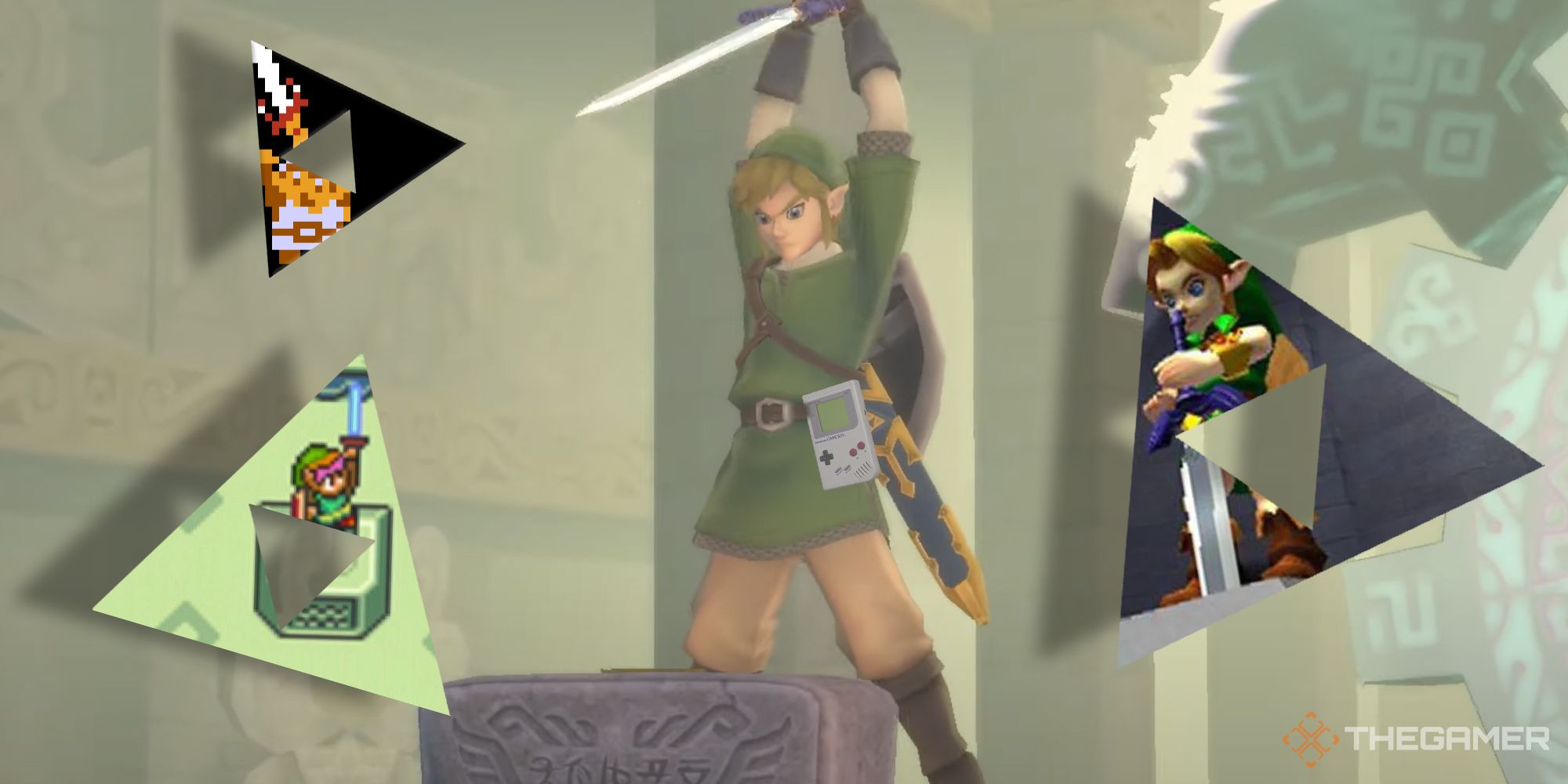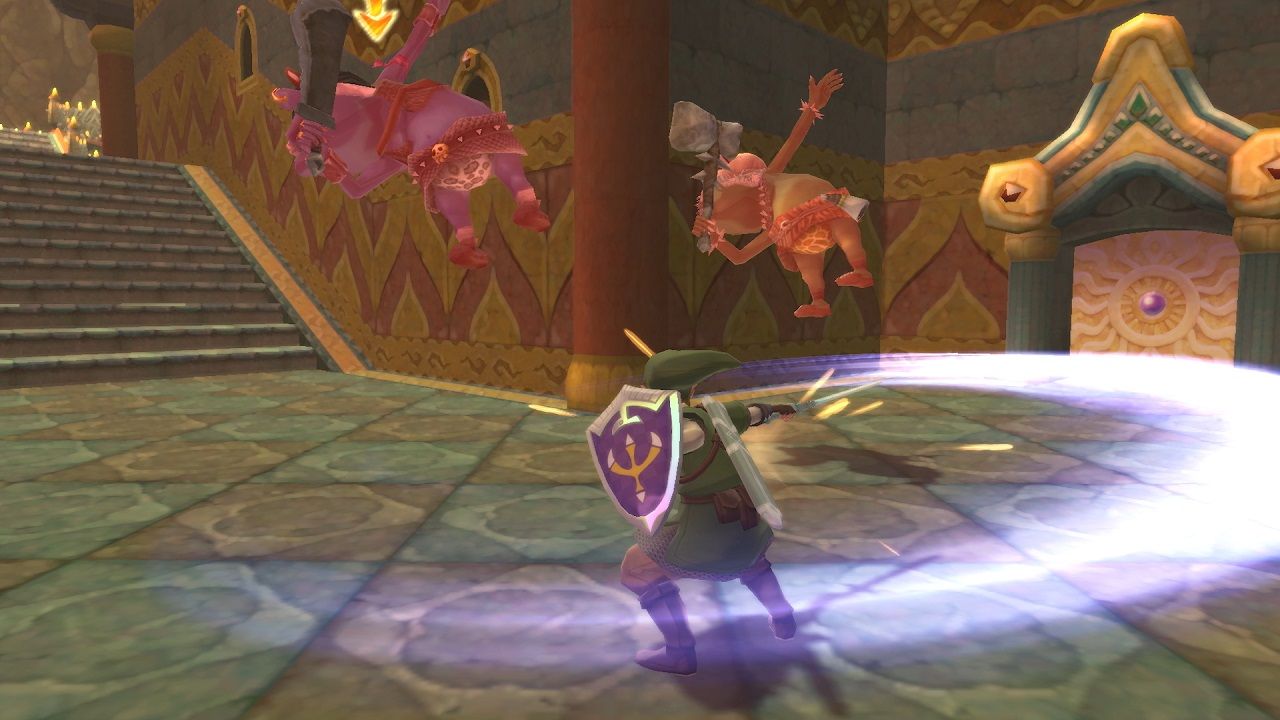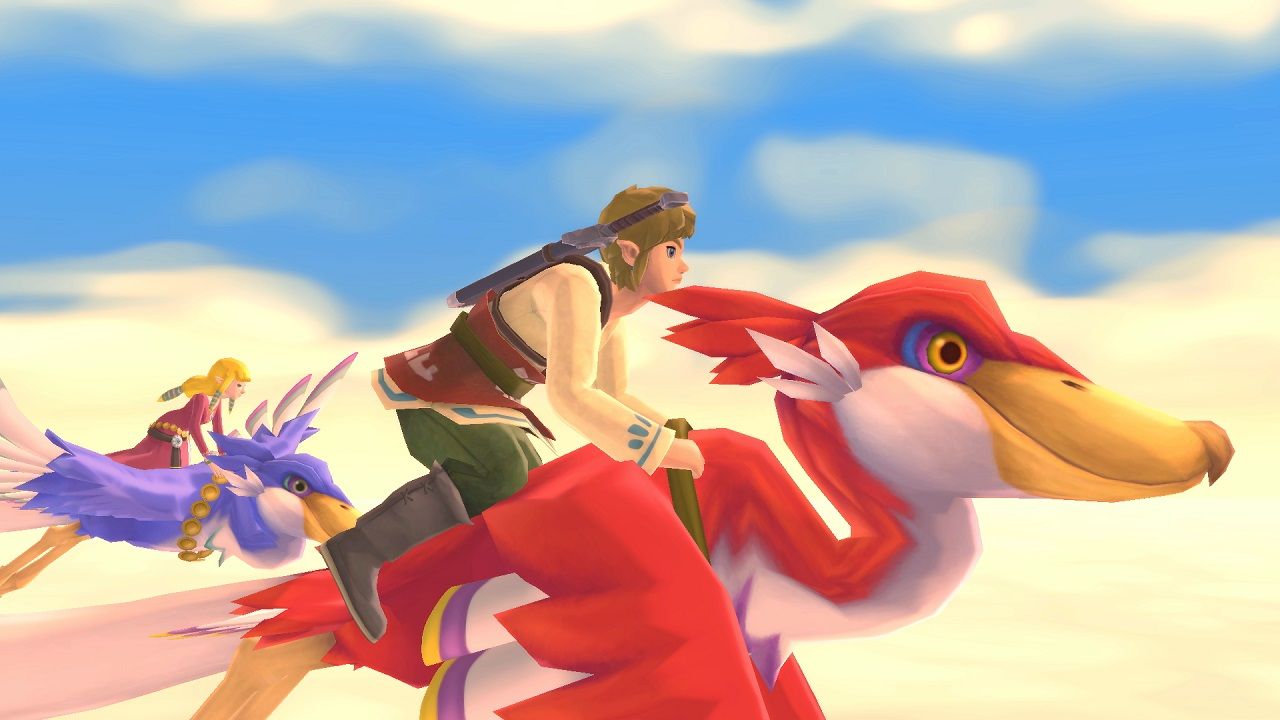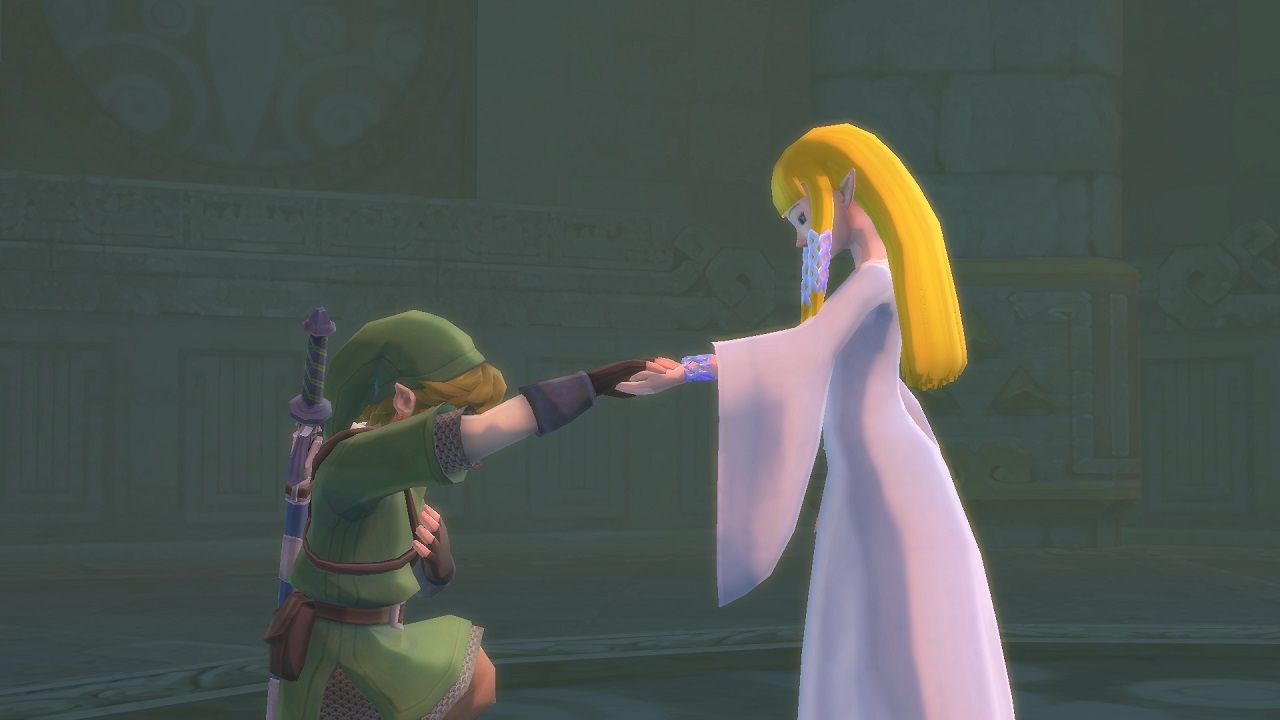Time hasn’t been kind to The Legend of Zelda: Skyward Sword. It launched as a showcase for motion controls when the very audience intended to embrace them were growing tired of wagging their arms about to mimic samurai swords and tennis rackets. The Wii Motion Plus adapter vastly improved the game’s accuracy, making way for reactive combat and inventive puzzle sequences, but it also only served to highlight how even the slightest calibration issues can doom the experience to frustration. For so many, the game was prohibitive, partly because of how much it expected of you to make it shine.
Even without these motion foibles, the journey itself was obtusely designed, bloated with needless side quests and overbearing tutorials that made playing it tiresome. It still harboured several moments of wonder, but uncovering these were few and far between, with much of the brilliance compounded by a formula that partly recognised its need to evolve, but seemed determined to capitalise on current trends instead of pushing The Legend of Zelda into pastures unknown, pastures it would eventually sow to reap greatness in Breath of the Wild.
I only dabbled with Skyward Sword back in 2011, walking away when I realised I didn’t have the patience for its finicky motion controls. That, and the Nintendo Wii was in the family living room and my parents kept taking the piss out of me. With the HD remaster launching last week, I saw it as an opportunity to give this adventure the chance it deserved - and I’m so glad I did. Skyward Sword HD is excellent, doing away with much of the monotony that held back its original vision while ensuring its control methods are far less obnoxious to master.
Despite my newfound admiration for Skyward Sword, it remains a stubborn relic, one that exemplifies where the series was at the time of its original release and how badly it needed to evolve to avoid stagnation. Twilight Princess was the start of this need for evolution, with the formula first established by Ocarina of Time back in 1998 beginning to make itself known. We began life as a humble Hylian striving for a greater purpose, and once we’re introduced to our closest friends and the nature of the world a far more important destiny is thrown out before us. We’re the Hero of Time, an individual prophesied to save the world and become guardian of the realm. Wind Waker, Twilight Princess, and Skyward Sword all put meaningful spins on this basic foundation, but they followed the routine in a way that eventually grew tiresome. Breath of the Wild likely took so long to make because Nintendo finally came to terms with this need for change, a desire to reinvent its flagship property rather than risk losing fans that had stuck with them for decades.
Even with many of the changes introduced as part of Skyward Sword HD, is it still incredibly long in the tooth when it comes to releasing its shackles and giving us full independence to appreciate its ambitious vision. Skyloft is a beautiful place, yet it’s permanently detached from the surface below in a way that Hyrule Field or The Great Sea simply isn’t, making it feel like Link is dipping into isolated hub worlds instead of embarking on a grand quest to reunite with Zelda and fulfil his destiny. It has the initial flourishes of an open world experience, with traditional temples no longer being the only place to find puzzles and enemies to contend with.
Faron Woods, one of the first major locales you visit, is filled with miniature obstacles and combat encounters that never hesitate to test your skills. Before I even reach the first temple, it feels like I’ve grown into a more capable warrior, abandoning the hesitant attitudes of Skyloft in favour of something better. I can revisit these places in the hours that follow with new equipment and tools in tow, able to triumph over puzzles and environments that once threatened to overwhelm me. Skyward Sword HD showcases a tangible sense of progress, but it is undermined by the fractured nature of its universe, a flaw which would finally be addressed in Breath of the Wild so many years later.
Stepping back is a bittersweet reminder of how far we’ve come, and how returning to a vision of Zelda still defined by its past is something that requires a surprising amount of patience. My theory is that traditional dungeons were abandoned in Breath of the Wild because they took away the agency of freedom Nintendo was so eager to express. In Skyward Sword, while you can teleport away whenever you like (with the help of an amiibo), dungeons feel fundamentally detached from the locations they exist within, like you’ve been whisked away to somewhere alien. The Divine Beasts in Breath of the Wild don’t have this problem, partly because you can jump out a window and return whenever you like.
BOTW’s Shrines follow a similar philosophy, acting as miniature dungeons that never pin you down. If you’re stumped or aren’t powerful enough yet, simply walk away and return when you’re ready. There’s a middle ground to be found here I’m sure Breath of the Wild 2 will inhabit, one where temple-esque structures present a more robust challenge that expands on what the Divine Beasts managed to achieve. Freedom doesn’t need to come at the cost of complexity, nor should it justify the presence of clumsy tutorials and a narrative that tries far too hard to mimic the structure of those that came before it.
In many ways, Skyward Sword feels like a test run for Breath of the Wild. Nintendo introduced a number of systems that would find their feet in the 2017 masterpiece, whether it be a freeform inventory, more open environments, or a relationship between Link and Zelda that went far beyond the damsel in distress tropes that have long confined them to a formula that simply wasn’t suited for expansion. Twilight Princess and Wind Waker aren’t beloved classics because of the restrictive template they inhabit, they’re timeless slices of brilliance because of how they introduce new and existing characters within an interpretation of Hyrule we’d never seen before time and time again.
I’ll return to these games in a heartbeat and still adore them, but I’m glad Nintendo began to see the cracks in the construction with Skyward Sword and made the necessary steps to evolve. I don’t think Nintendo ever intended to leave what Zelda used to be behind, it simply needed to temporarily abandon it in service of moving forward. As the series continues to evolve, I’m sure we’ll see Link and company return with adventures that not only mimic these classics, but build upon them with everything that made Breath of the Wild so masterful and more. Skyward Sword HD is great, and perhaps shines even brighter with the power of hindsight afforded to it so many years later.




